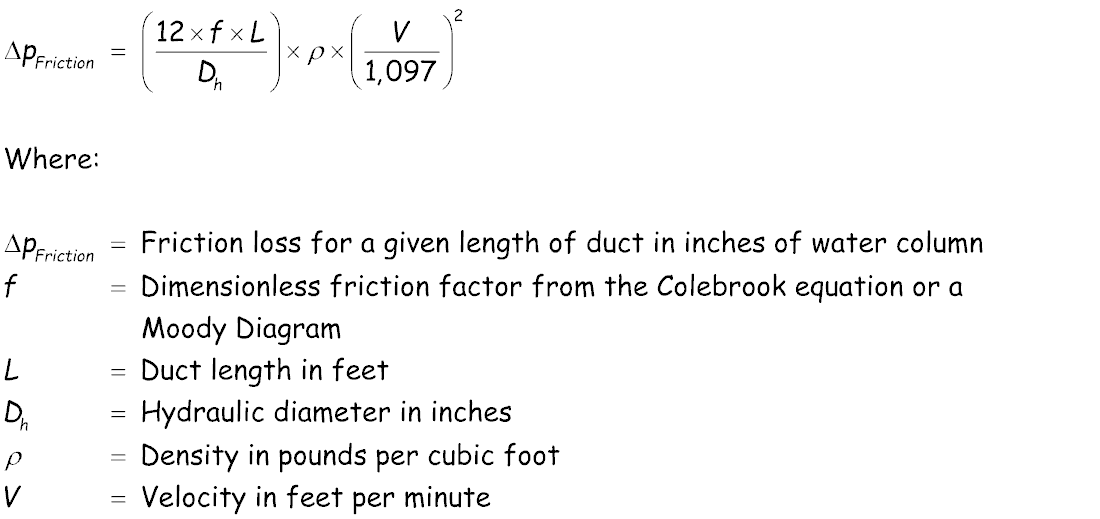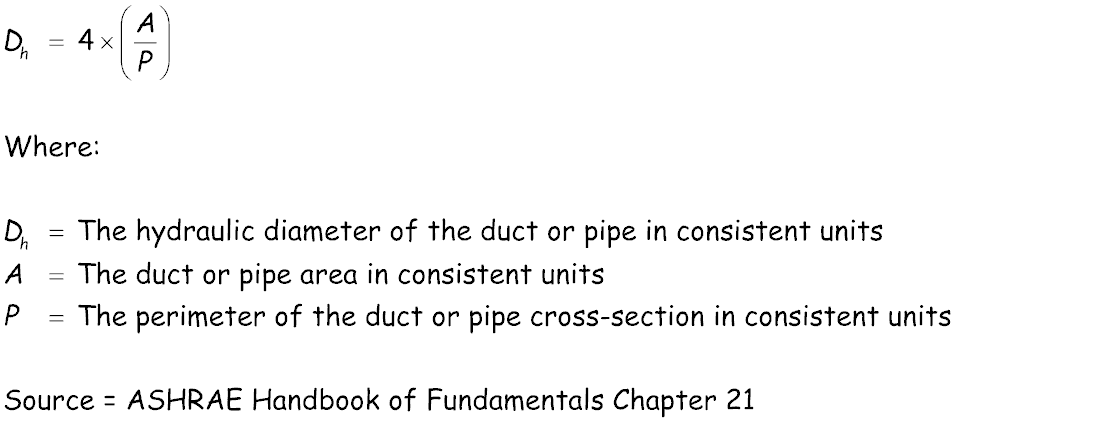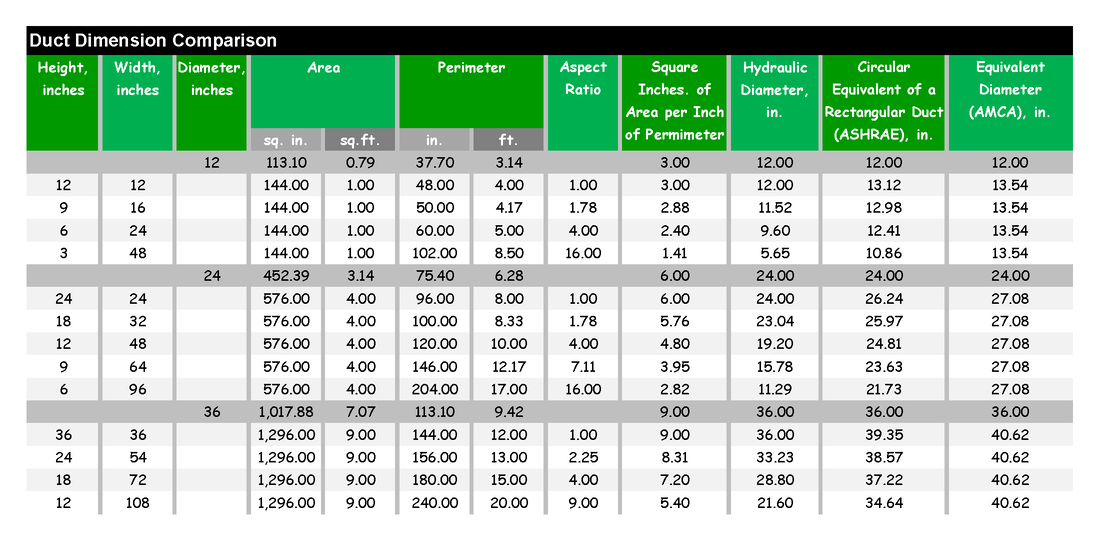Hydraulic Diameter |
|
One of the common equations used to calculate the pressure drop for a pipe or duct is called the Darcy Weisbach equation, which is illustrated to the right. The square law that we use to project a system curve for a given duct or pipe network in a fixed configuration has its roots in this relationship as do most duct friction charts.
One of the terms that shows up in the Darcy Weisbach equation is hydraulic diameter, which is illustrated to the right, below the Darcy Weisbach equation. If you do the math, for a circle, the hydraulic diameter and what we would simply call the diameter of the circle are the same. In other words, a 12 inch round duct or pipe has a hydraulic diameter of 12 inches. Interestingly enough, a 12 inch square duct (one square foot) also has a hydraulic diameter of 12 inches. But, if you hold the cross-sectional area constant at one square foot and vary the aspect ratio, the hydraulic diameter starts to decrease as the aspect ratio the duct increases above 1. |
The table below illustrates this and also some of the other duct dimensional characteristics for different duct sizes and aspect ratios.
Hydraulic diameter is not the same thing as the circular equivalent of a rectangular duct or equivalent diameter. And, just to make things interesting, each of those terms has a different definition . For more on that, visit the Circular Equivalent Duct page of the website. Meanwhile, the downloads below will give you the .wmf files for the Darcy-Weisbach equation and the Hydraulic Diameter equation so you can use them to document your work. You will find more information on the specifics of doing that and why it matters on the Useful Formulas page of the web site.
|
| ||||



